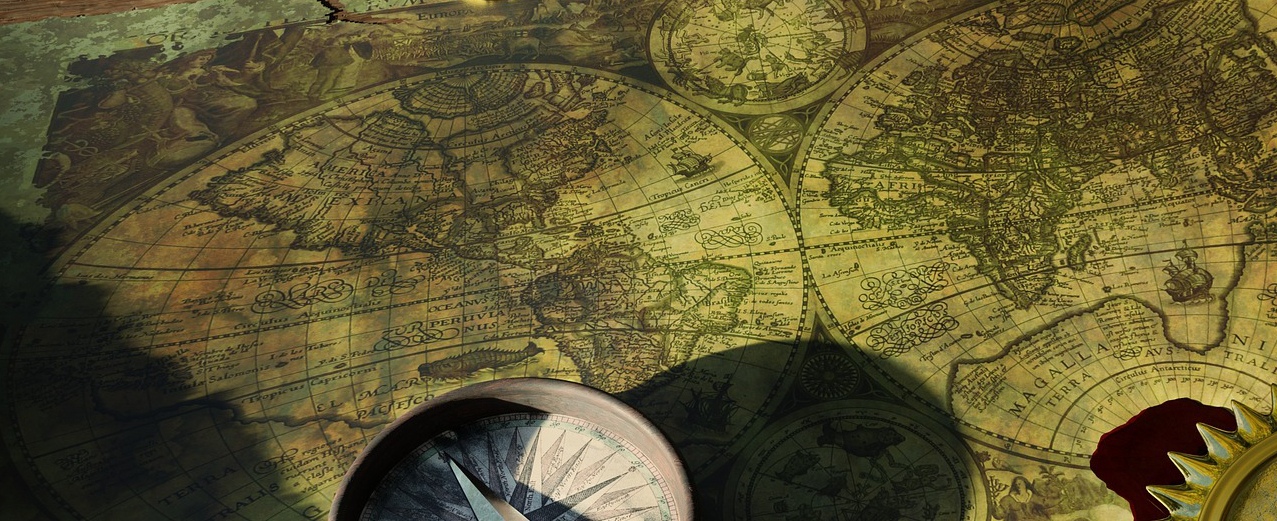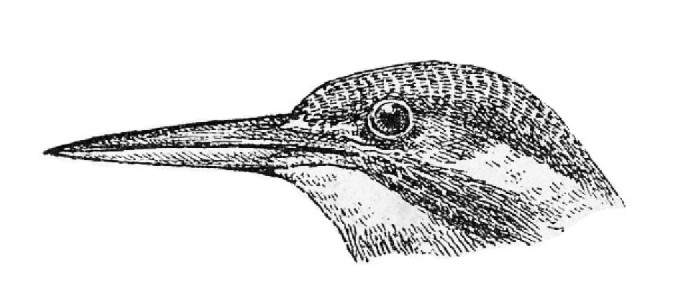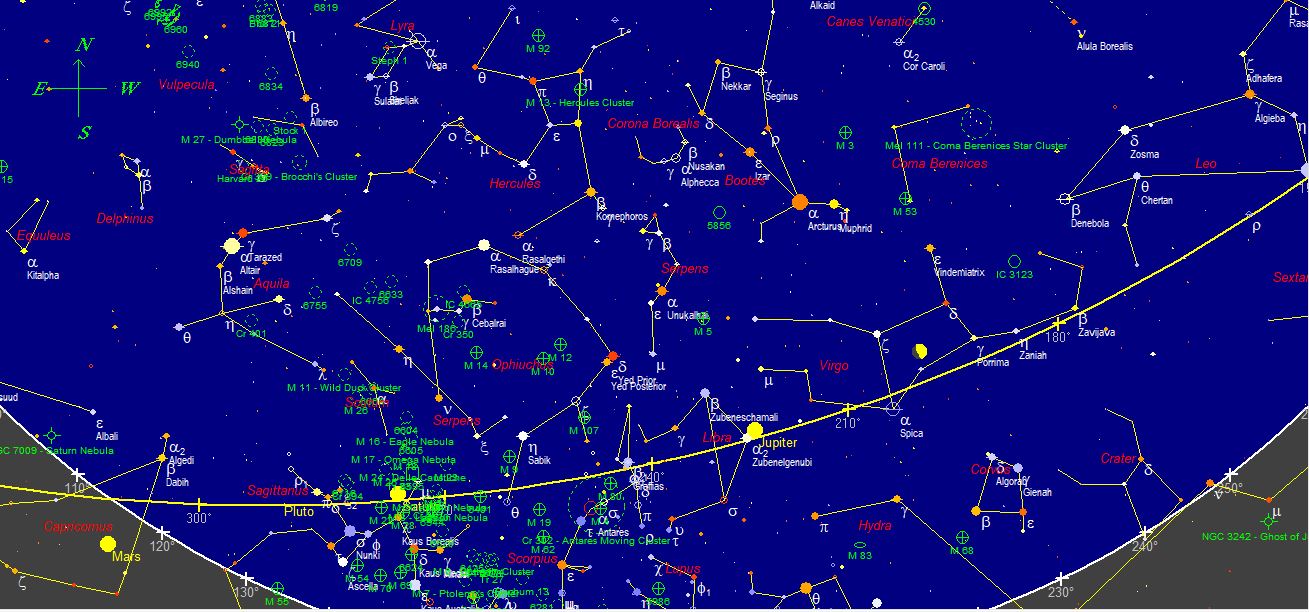
The Sun that in May was in Toro passes in Gemelli on June 21st, the day of the Summer Solstice; has reached the maximum height on the horizon at noon solar and from now begins to descend along the Eclittica, the hours of light begin to decrease. Solstice from the Latin sol and sistere, sun that seems to stop and go back along the Eclittica versole autumn winter positions.
South-facing in the evening, we see from West to East from dusk to night, like ecliptic constellations, Cancer, Leo, Virgo, Libra, Scorpio, Ophiuchus, Sagittarius, Capricorn, Pisces and Aries.
The Summer Triangle is admired with its three stars Vega della Lira, Deneb del Cigno and Altair dell’Aquila.
Scorpio
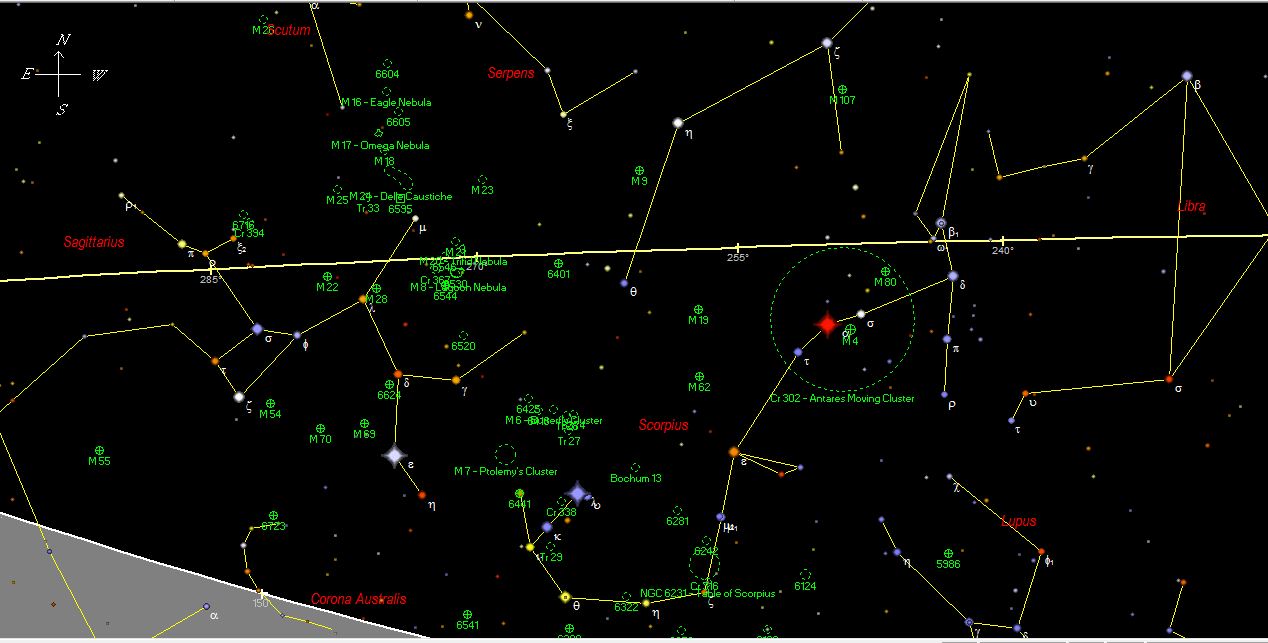
It is the constellation through which the sun transits during the last days of November. It is located south of Ofiuco, the thirteenth constellation that the Sun crosses along the Eclittica. It has the shape of a lying S with a triangle of stars forming the sting on one side and an arc of stars forming the claws on the other .
It contains numerous bright stars, which make it a very obvious constellation: the main star is Antares (from the Greek, “anti Mars, rival of Mars”, because of its red color that makes it look like this planet). It is a really huge red supergiant: it is estimated that its diameter is at least three hundred times that of our Sun. Besides being a long-term variable, it is also a double, since it has a blue companion of magnitude 6, quite difficult to see . If it were in place of the Sun it would come up to Mars.
The constellation contains many other double stars. ζ and μ Scorpii are two pairs of blue-white stars easily separable to the naked eye as ω Scorpii, formed by a white star and a yellow giant, observable to the naked eye. With small telescopes we observe β, ν and ξ Scorpii: the latter is made up of four gravitazionally connected stars.
A NO of Antares a globular cluster at M80 is at 36.00 a.l. On 21 May 1860 in this cluster appeared a Nova, T Scorpii. A SO of Antares another globular cluster, M4, only 6,500 a.m., the only one that Messier was able to solve.
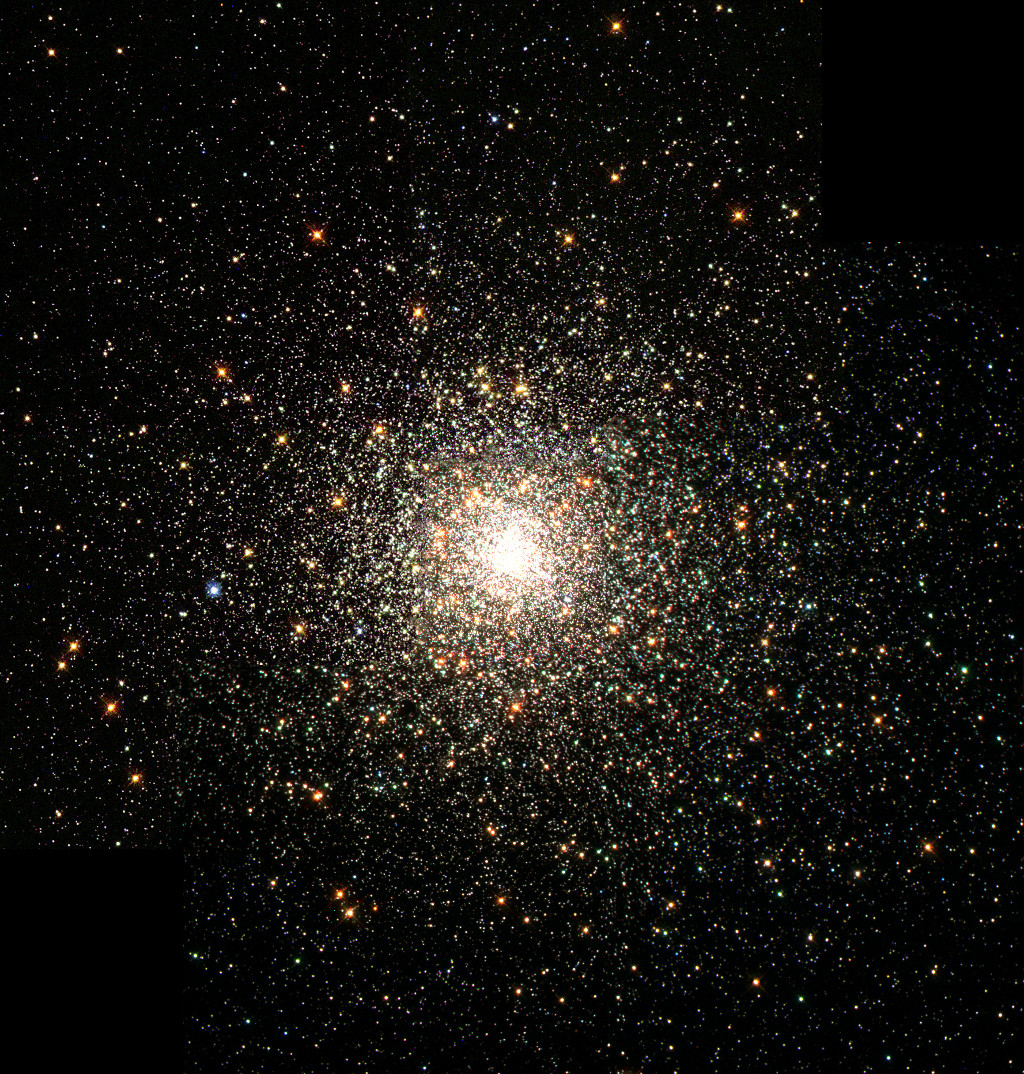

In the southern part of the constellation, under Ophiuchus there are some interesting open clusters. M6, made up of about fifty stars including a red giant of sixth magnitude: it is also called Ammasso Farfalla because of its characteristic shape.

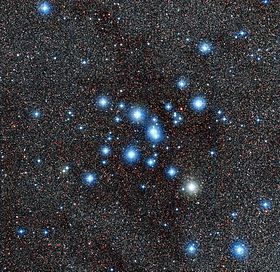
M7, a wide and bright open cluster visible to the naked eye. On its eastern edge is a.globular NGC 6543, while inside there is a planetary nebula.
NGC 6231, an open cluster consisting of about 120 stars, mostly of sixth magnitude: excellent to observe with binoculars, at 6200 a.l.
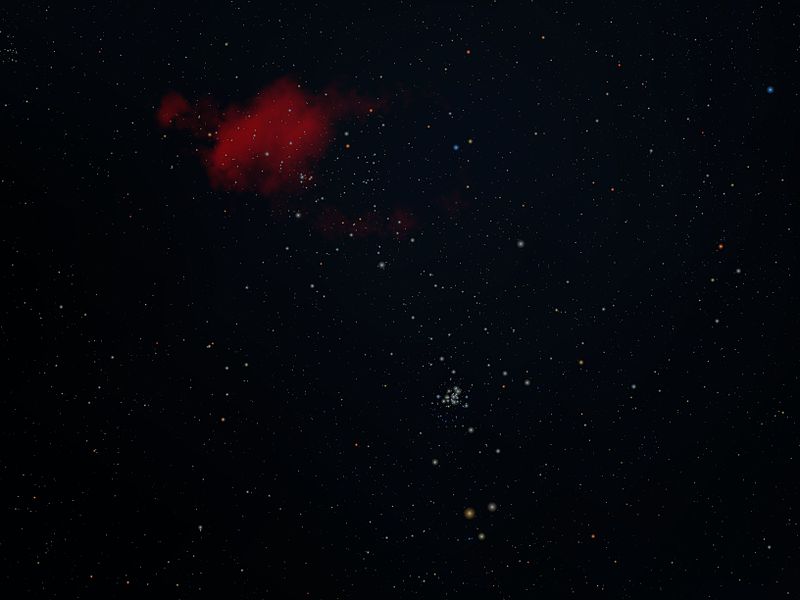
NGC 6302, is a beautiful planetary nebula called Butterfly Nebula is 3392 a.l.
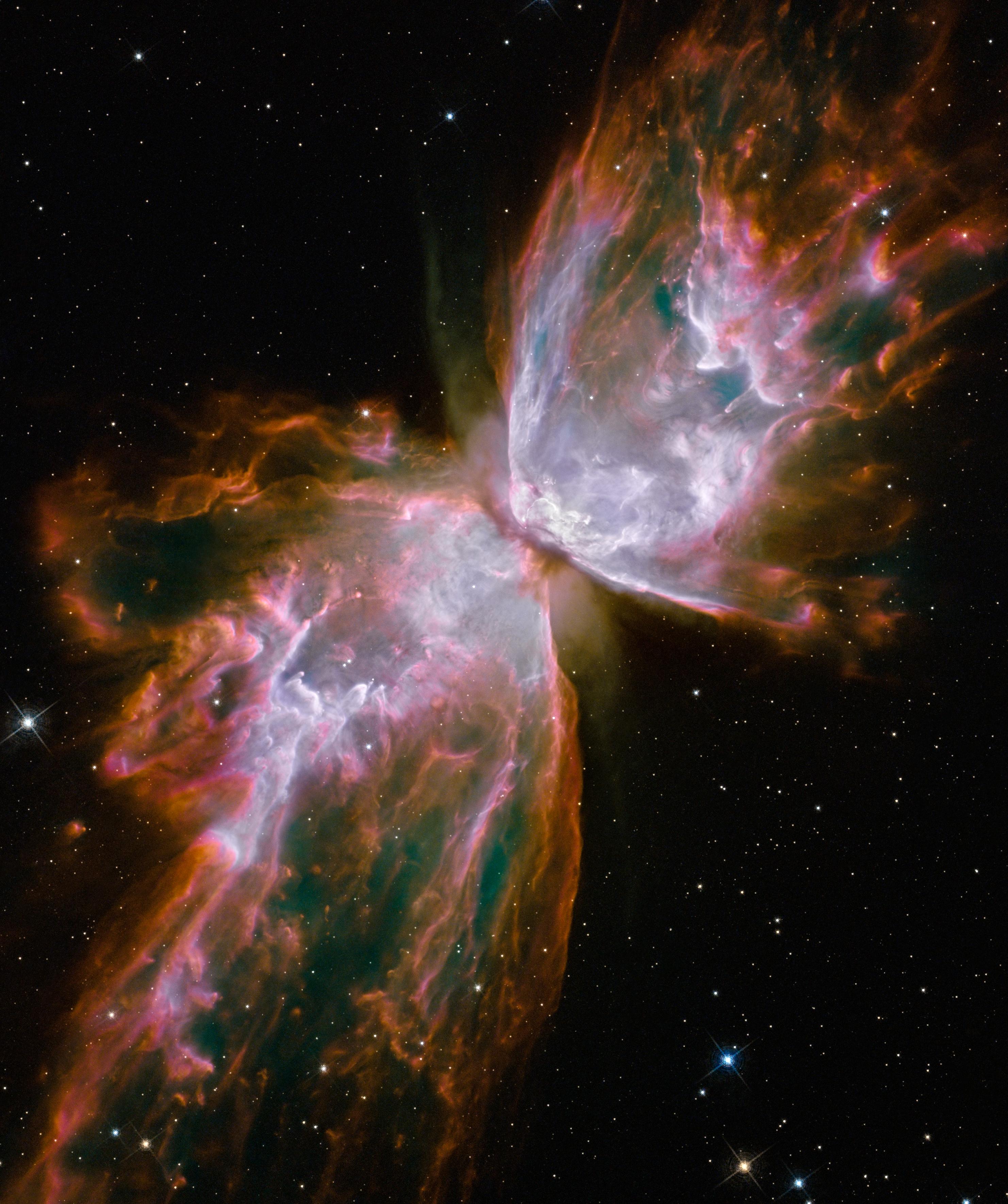
Mithology
The constellation represents the scorpion that Artemis sent to sting Orion to punish him for his pride. It rises to the east when Orion sets to the west and vice versa.
For the Greeks this constellation also extended in the area now occupied by Libra, which represented the claws of the scorpion: it was the Romans, in the first century BC, to draw the new constellation and to resize that of the Scorpion.
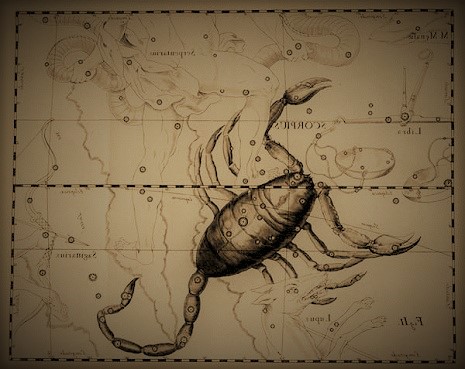
_________________________________________
The maps of the sky are taken from Skymap, software downloadable in demo version from the site http://www.skymap.com
Credits
Author: Lucia Corbo. As a Natural Sciences teacher and expert in didactics of Astronomy, she has collaborated with various magazines curating articles, columns, and multimedia materials. For the Italian Ministry of Education, she edited the cd “Students show the stars” and with N. Scarpel the book “Astronomy on the net”; she promoted and coordinated the first editions of Astronomy Weeks for schools. She has held multiple refresher courses on the didactics of Science and Astronomy and Astronomy courses for students and adults, both in presence and online.
Translation by Maria Antonietta Sessa

